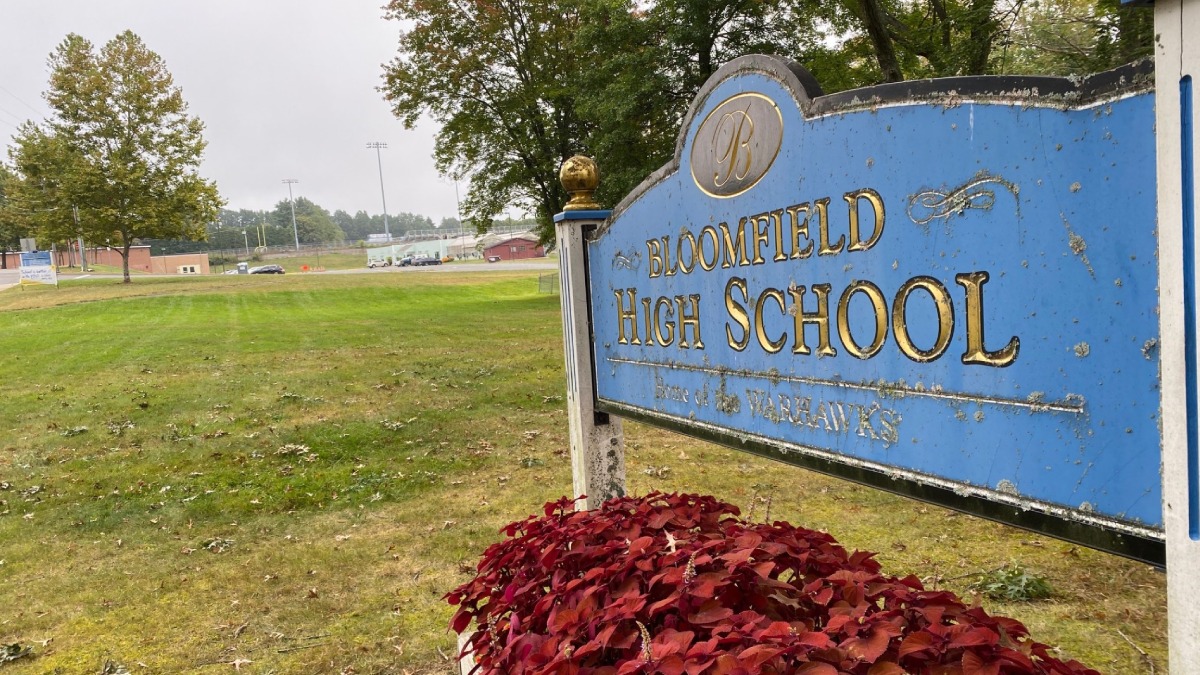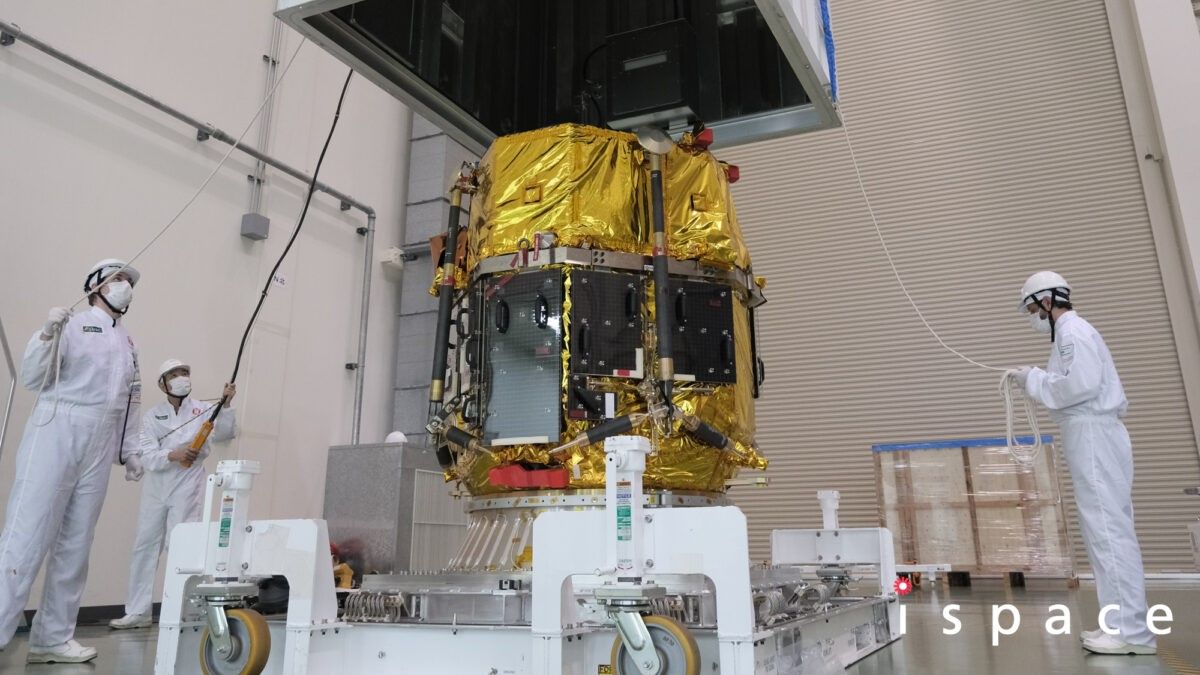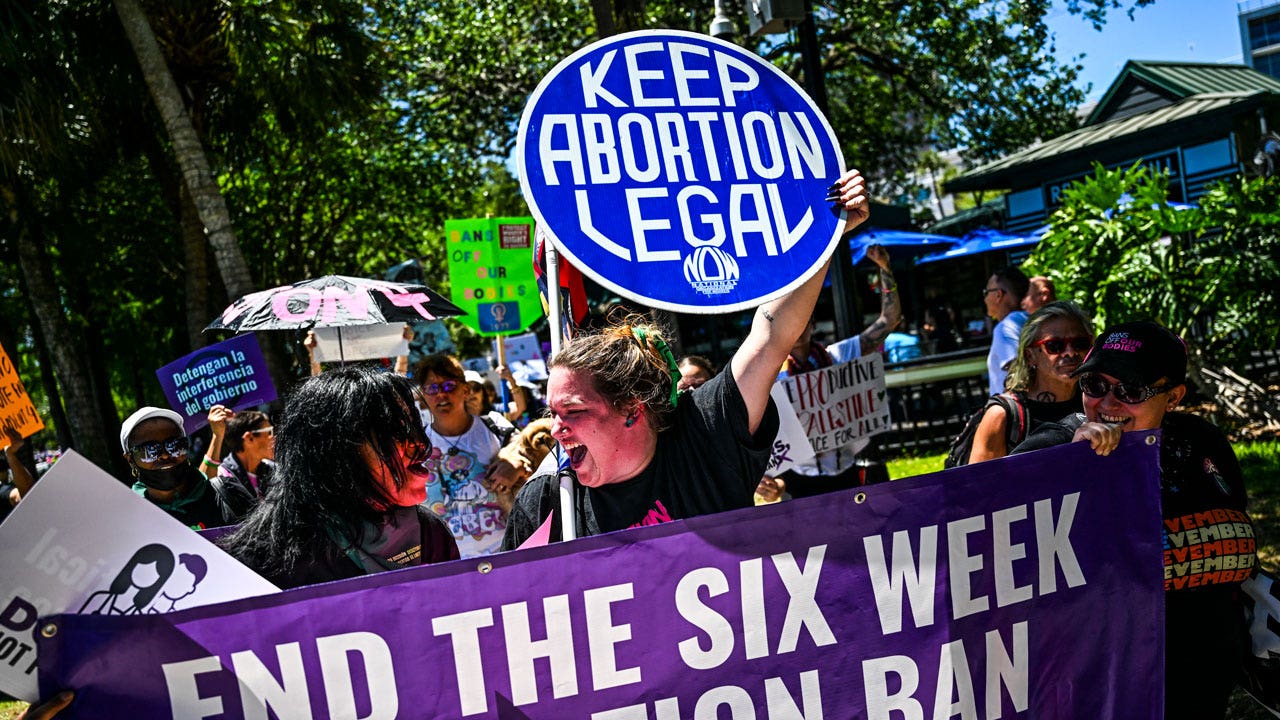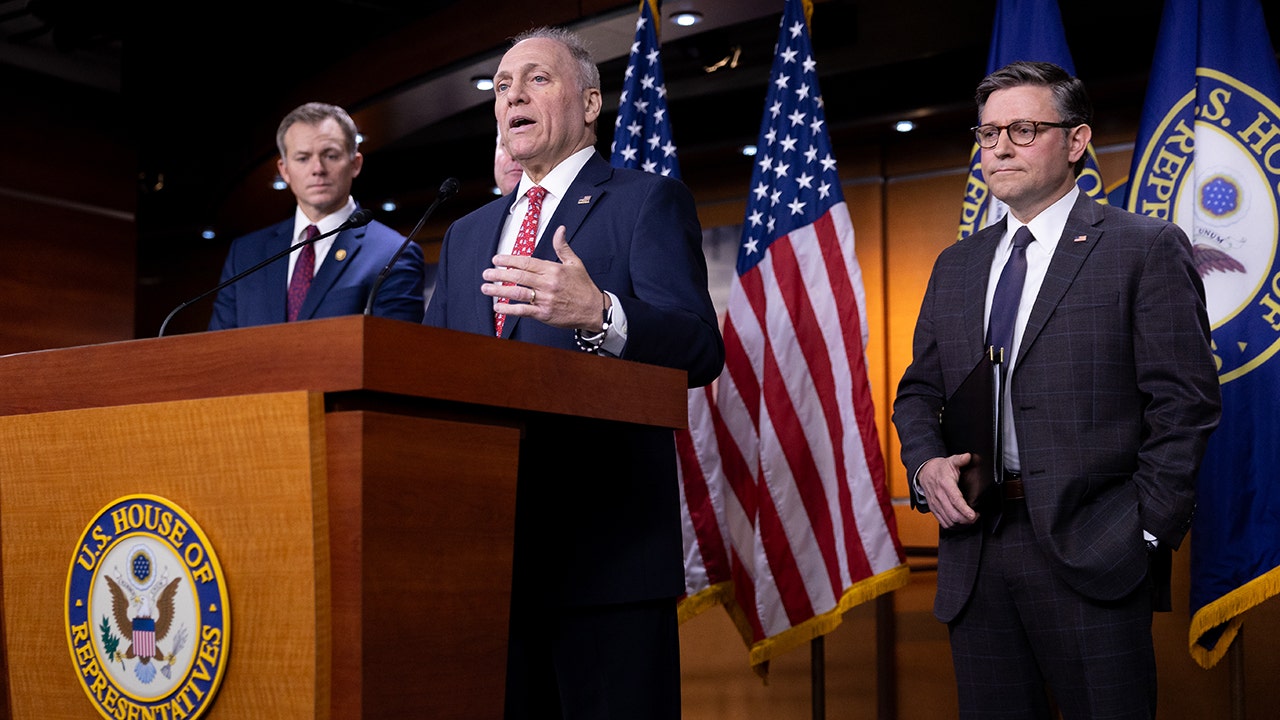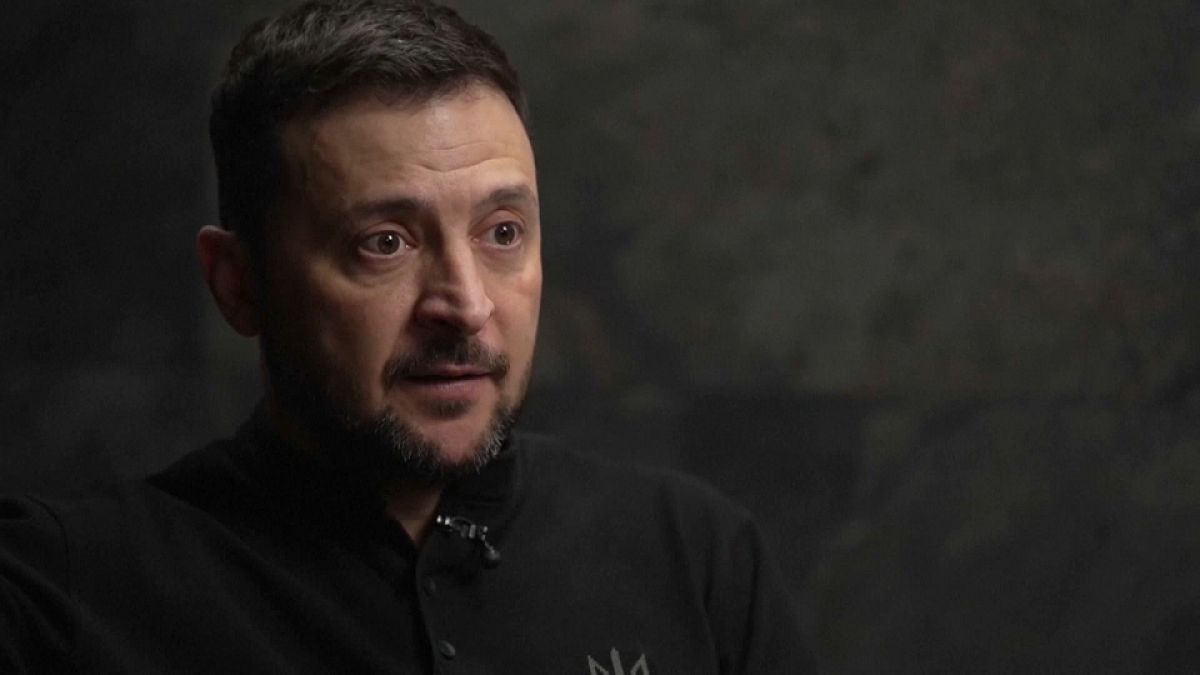All the latest sports news from Hawaii’s sports station
Hawaii
Consolidated Theatres announces it will shutter another location — this time on Oahu
/cloudfront-us-east-1.images.arcpublishing.com/gray/HTC7EIAWFFGBZDNAKJ6QTOCCJY.png)
HONOLULU (HawaiiNewsNow) – Just a few weeks after Consolidated Theatres closed its Maui location, the company is shuttering another site ― this time on Oahu.
Consolidated announced Tuesday that it will close its location at the Koko Marina Center in Hawaii Kai after its last scheduled show on Sunday.
Theater officials say the decision was made after taking into account current market conditions.
They also evaluated how past and current movies were doing in the theater.
Consolidated Theatres Regional Manager Rod Tengan hopes to continue providing entertainment across Oahu, despite the upcoming closure.
“Despite a myriad of challenges faced by the exhibition industry from the unprecedented pandemic, we are honored to be recognized as an industry leader in Hawaii, and want our loyal audiences to know that our commitment to serving you, and delivering the highest quality entertainment, remains our top priority,” Tengan said, in a statement.
The location said that each movie-goer who visits during July 28 to July 30 will receive a free popcorn as well as Mahalo Day ticket pricing, which is $7 for a seat all day.
During their closing weekend, guests will also be able to take an old movie poster from the theater’s library, while supplies last.
Employees are being given a chance to pursue jobs at other Consolidated Theatres locations.
Copyright 2023 Hawaii News Now. All rights reserved.

Hawaii
Over a year after Lahaina fires, Native Hawaiian homeowners hit another breaking point
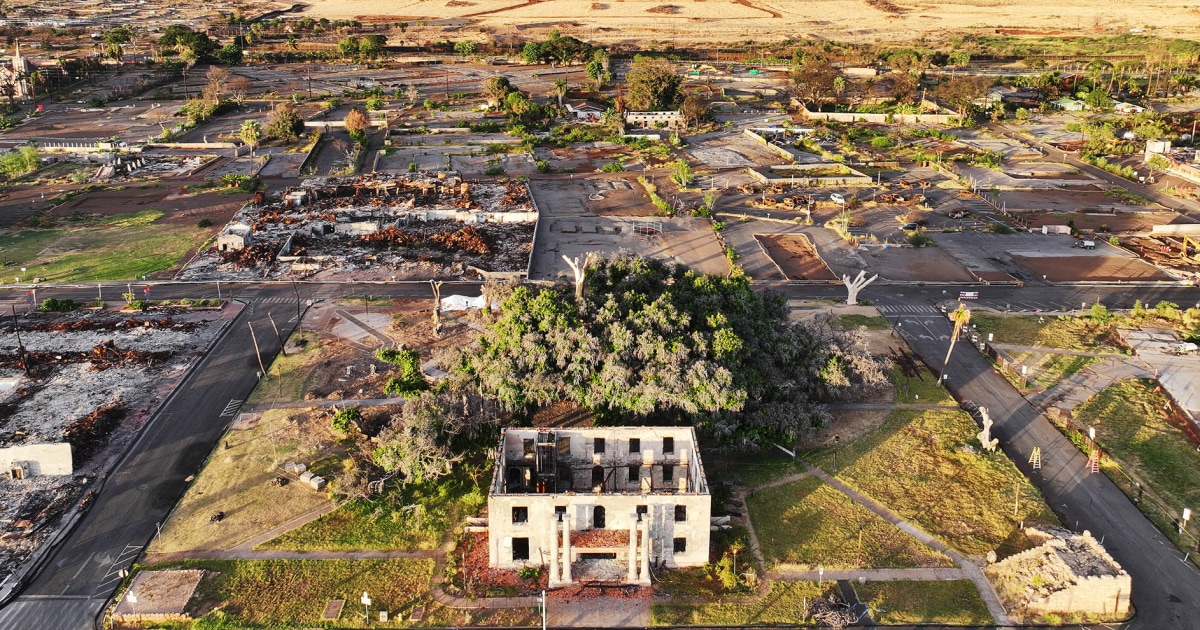
Mikey Burke, a Native Hawaiian and fourth-generation Lahainan, lost her home in the Maui wildfires last August. She wants to rebuild for her family of six, but the costs are overwhelming, especially since her rental assistance ran out two months ago. And when she tried to get an extension, she was denied. She also didn’t qualify for FEMA aid until her rent was due.
Lifelong Lahaina residents who have squeezed out every avenue of assistance are now at a unique crossroads: leave the only home they’ve known or figure out a way to stay — both of which feel impossible.
For many Lahaina homeowners, rental assistance through their insurance ended in October after they’d spent the first couple of months post-fire filing claims and getting shuffled into hotels.
Now, they’re feeling a multipronged pinch of expiring financial assistance, rising rents and an insurance gap that has left them unable to pay for rebuilding costs.
“A couple of months ago, we all felt like we were finally at that ‘we can breathe’ phase,” said Kukui Keahi, a fire survivor and the community care lead for the Council for Native Hawaiian Advancement’s Maui recovery program. “Now, I think we’re at this rocky area again.”
Burke is part of a large swath of Lahaina homeowners who had hoped insurance companies would extend their loss of use (LOU) and additional living expense (ALE) benefits past 12 months, like companies had done after wildfires in other states, but they didn’t. Before they can apply for the Federal Emergency Management Agency’s rental assistance, homeowners must first exhaust all of their LOU and ALE policies, which cover rental costs when a disaster makes your home uninhabitable. Burke said she applied as soon as she qualified, but it took two months to get approved and the amount was based on her mortgage, not current sky-high rental rates.
FEMA Regional Administrator Bob Fenton said the lag between applying for assistance and approval often has to do with filing proper paperwork and can be “as quick as 24 to 48 hours” or take “an extended amount of time.” Around half of the valid and referred Maui survivors who have applied for FEMA have been approved for aid, according to the agency.
Burke said she tried multiple avenues of assistance and even negotiated her rent with her landlord to no avail. Stuck with paying $3,100 for her mortgage and $7,600 in rent, she said it was the first time she considered leaving her hometown.
“It was just a split-second,” she said. “But sometimes that’s all people need is that split-second to make that decision.”
A crisis of rising rents
Over the past year, the federal government has focused on moving fire survivors out of hotels and shelters and into something more stable. Because homeowners with LOU or ALE benefits, standard in most homeowners’ insurance policies, don’t qualify for FEMA aid, the agency’s housing programs effectively prioritize those who had been renting before the fires.
“A lot of folks feel there’s a disparity between people who were previously renters and people who are homeowners,” said Maui County Councilmember Tamara Paltin. “There’s a little bit of feeling that homeowners didn’t get much help from the federal government, like how the renters did.”
Fenton said FEMA provides everyone the help they’re authorized to receive through Congress and regulations. “Those that have insurance are probably in a much better situation than those that have nothing,” he said.
Homeowners like Burke disagree. With LOU and ALE coverage expiring, they are now having to pay rent, their mortgage and sometimes homeowners association fees, while navigating the rebuilding process and the costs for permits, architectural plans, contractors and materials on an island with finite resources.
Meanwhile, rents on Maui have climbed significantly. To house survivors in the immediate aftermath of the fire, FEMA put up many in short-term rentals and paid the vacation rental market rate. That cost increase was passed on to survivors with or without FEMA assistance, and they now pay 43%-80% more rent for a home with the same or fewer bedrooms, according to a University of Hawaii Economic Research Organization survey released last month.
Burke said homeowners like herself are forced to consider dipping into their rebuilding money to pay their rent. “The longer we have to rent, the less money we have to build,” she said. “And if it goes on for long enough, homeowners might not be able to build at all. It’s almost having to choose between housing now and housing later.”
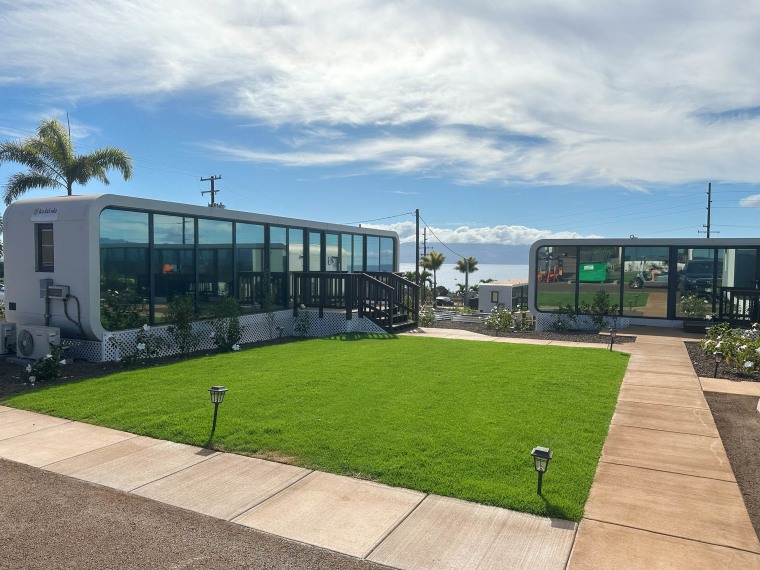
Since the fires, about half of survivors have had to move out of West Maui, and nearly a tenth of that group have relocated to the continental U.S. or overseas, according to the UHERO survey. While a third said they plan to move back in the next year, data researchers and community leaders wonder if they will.
Lahaina’s exodus exemplifies what’s happening with Native Hawaiians across the state. As of 2022, nearly a quarter of all Native Hawaiians born in Hawaii had moved away to the continent, according to data from the Council for Native Hawaiian Advancement. Today, more Native Hawaiians live in the continental U.S. than in Hawaii.
“What happens is, you just have people holding on as long as they can, and then eventually they break,” said data researcher Matt Jachowski, who compiled the data for the council. “You hear, ‘Oh, if I move to Texas, if I move to Vegas, if I move to Washington, I’m going to get higher wages. I’m going to get better housing.’”
Bert Noury and his wife, whose Native Hawaiian family goes back generations in Lahaina, decided to take up FEMA on its relocation program. Sick of jumping from one temporary housing situation to another, he took a job transfer to Orlando, Florida. But instead of living with more security, he said FEMA is behind on paying their rent. (Fenton said Noury has not provided FEMA with the necessary documentation; Noury said he’s resubmitted their information multiple times.) Meanwhile, he continues to pay his HOA fees for their townhome in Lahaina, hoping the homeowners association will rebuild in the next five years.
“We’ve been using every single dollar that we’ve saved over the years to give our family a roof and stability, but I want to go back home,” he said. “I want to save up money again and live at home.”
Impossible to rebuild
Earle Kukahiko’s ALE benefits also expired this fall. One of many families in Lahaina who lived several generations on a property, he, his wife, their grown kids and their cousin have been living at his sister’s. Kukahiko and his son sleep in tents outside. He just found out he was accepted for one of the 450 temporary homes built by the state, for which more than 1,500 people applied.
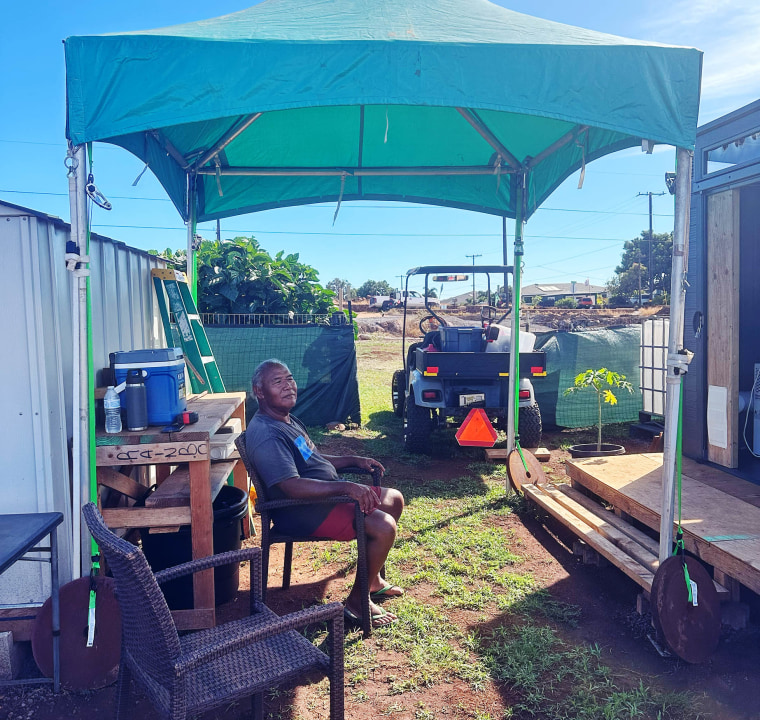
Antsy to rebuild, Kukahiko, 67, is working through the process as fast as it will let him — he hired a draftsman to draw up architectural plans so he can get his building permit, which costs anywhere from $6,000-$10,000. In the meantime, he is not waiting to be back on his ‘āina or land. He spends his days tending to his yard — grasses gathered from the side of the road and replanted. At the center is a stone mound with red and yellow ti leaves, saved from what his father planted decades ago.
“People pass and they say, ‘Wow, first time we see somebody take care of the yard before you even have a house,’” said Kukahiko. “And I’ve always felt that no more hale (home), but get ‘āina.”
Carpenter Jeremy DelosReyes, a seventh-generation Lahainan and a Native Hawaiian, is also caught up in the red tape of rebuilding. Construction was supposed to start in July, but the power lines were cut on his block and the Environmental Protection Agency found his water contaminated. He says with the rise in construction rates, it would take over $1 million to build his house and he got only $410,000 from his insurance.
“I know how to build my house. I can build my house for $400,000,” he said, “but that’s calling in every favor I know from everybody that I know, and I owe them for the rest of my life.”
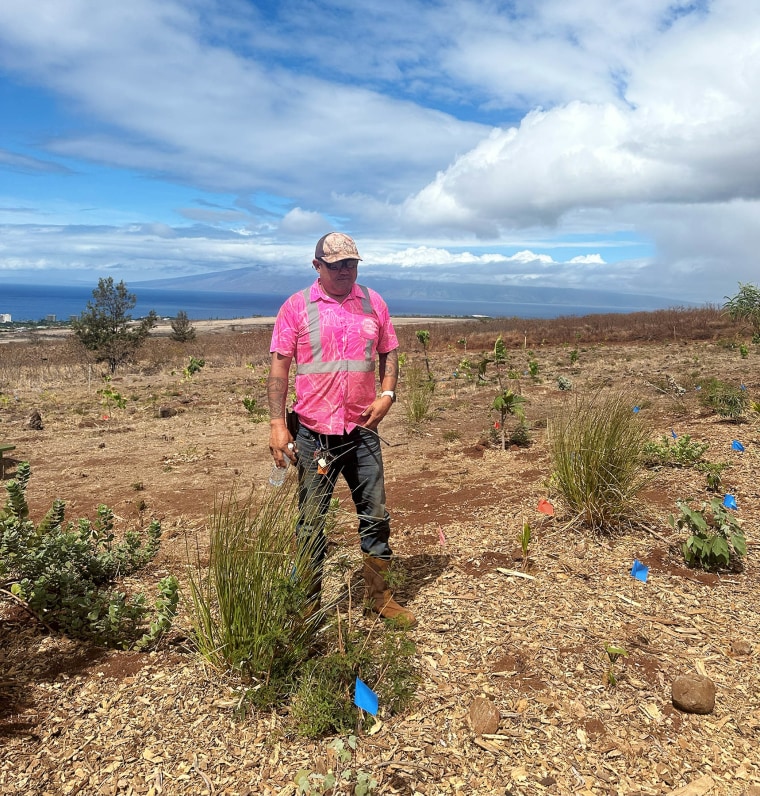
Community help
It’s been up to community groups and nonprofits to step in to fill the financial gaps for survivors. Burke helps lead the newly formed Lahaina Community Land Trust, which is creating an insurance gap program to help homeowners bridge the costs between insurance payouts and rebuilding. While the trust’s first goal is to help families stay, if a resident does want to sell their land, the trust will offer to buy it at fair market value, build a home on it and sell the home, with a long-term land lease, at an affordable price through a lottery system that prioritizes Lahaina community members.
“There’s this inherent connection to this place and our people that we have and that a lot of us are very conflicted about — like what do I do with this?” Burke said. “For me, [throwing myself into my community] was my coping mechanism at first, and then it also just became the most natural thing in the world. It became my kuleana.”
Kuleana, or the Hawaiian notion of one’s responsibility to the land and community, is what keeps other Native Hawaiians in Lahaina pushing through, they say. DelosReyes has started Kaiāulu Initiatives, where community members can reconnect with the ‘āina by planting native plants on an area overrun with the types of invasive grasses that fueled the wildfires. Kukahiko now serves on the mayor’s advisory team as a liaison to the community.
Keahi said it’s her “biggest honor to give back to the community that raised me,” as she helps residents navigate not just FEMA bureaucracy and unemployment, but also the programs the Council for Native Hawaiian Advancement offers, like rental placement and temporary housing. But she worries about the longevity of recovery programs, as there is no shortage of disasters capturing funders’ attention across the county. Then there are fears the returning Trump administration could cut FEMA funding.
The Lahaina Community Land Trust understands that funding is an uphill battle, but it has slowly been making gains. Last month, the trust acquired its first property — the sellers, who weren’t originally from Hawaii, wanted the property to stay in community hands — and is in the process of acquiring a second. When Burke and the trust’s founders went out to celebrate the sale over dinner, they noticed a local family commemorating an event of their own: their last dinner in Lahaina. They were moving away that night.
“That was crushing,” said Carolyn Auweloa, a co-founder of the trust. “It’s what we know is going to happen. But it’s one thing for people to have to leave for a little while. What’s scary is some of them are leaving and don’t really have a clear path to come back. They’ll be displaced and then replaced with who?”
Hawaii
Hawaii women’s volleyball prevails in Big West semifinals

The University of Hawaii women’s volleyball team prevailed over UC Davis 25-22, 16-25, 25-20, 21-25, 15-13 in the semifinals of the Big West Conference tournament on Friday.
Hawaii improves to 20-9 overall and advances to the Big West finals against Cal Poly at 3 p.m. HST on Saturday. The ‘Bows went 2-0 against the Mustangs in the regular season.
Caylen Alexander had a match-high 22 kills for Hawaii.
Hawaii
To tip or not to tip? Here’s what Hawaii food industry workers suggest

HONOLULU (HawaiiNewsNow) -These days, it seems like tipping options at fast food restaurants and other over-the-counter establishments are becoming more and more common. You order something to go, you get ready to pay, when a screen appears, asking for a tip.
Hawaii News Now asked a few customers at the Kuhio Food Hall in Waikiki what they would do when faced with this request.
“No, it doesn’t matter (if it’s takeout of sit down),” said Hank Ravestein. “I tip 15%.”
Ernest Lee has a different perspective.
“If I am standing ordering my meal and get my meal and going to sit down, then typically, it’s not tipped,” he said.
Mike Palmer, a board member of the Hawaii Restaurant Association and the owner of the Kuhio Food Mall in Waikiki, said tipping depends on the situation.
“So I just tell people do what you are comfortable with — if you don’t want to tip, don’t tip, if you get great service and encourage that person behind the counter, you know they are working hard for their money,” Palmer said.
Palmer added that while so many are stuck with tipping based on percentages, there are other options, especially when it comes over-the-counter service.
“On almost every tipping system that has that option, people don’t realize, they think they have to automatically put in 15 to 20, 25%, but there is usually an option on those screens like ours says you hit ‘other,’ you tip a custom amount — 50 cents, a dollar, whatever,” Palmer said.
He said that no matter the circumstance, a customer should not feel obligated to tip for mediocre or bad service.
Instead, base it on the service provided and consider this: “A lot of times, counter service people are not the highest compensated in the industry and I think personally, it’s a great way to stimulate the economy by giving people an extra buck or two.”
For Andrew Thomas, a server at the food mall, getting a tip is always appreciated but not expected.
“I just expect people to know that if they want to go ahead and, it makes my day and I just give them my service, whether they tip or not,” Thomas said.
And that’s a tip on tipping that is definitely something to think about.
Copyright 2024 Hawaii News Now. All rights reserved.
-

 Health1 week ago
Health1 week agoHoliday gatherings can lead to stress eating: Try these 5 tips to control it
-

 Science4 days ago
Science4 days agoDespite warnings from bird flu experts, it's business as usual in California dairy country
-

 Health5 days ago
Health5 days agoCheekyMD Offers Needle-Free GLP-1s | Woman's World
-

 Technology3 days ago
Technology3 days agoLost access? Here’s how to reclaim your Facebook account
-

 Sports1 week ago
Sports1 week agoBehind Comcast's big TV deal: a bleak picture for once mighty cable industry
-

 Entertainment2 days ago
Entertainment2 days agoReview: A tense household becomes a metaphor for Iran's divisions in 'The Seed of the Sacred Fig'
-
Science1 week ago
Political stress: Can you stay engaged without sacrificing your mental health?
-

 Technology1 day ago
Technology1 day agoUS agriculture industry tests artificial intelligence: 'A lot of potential'





